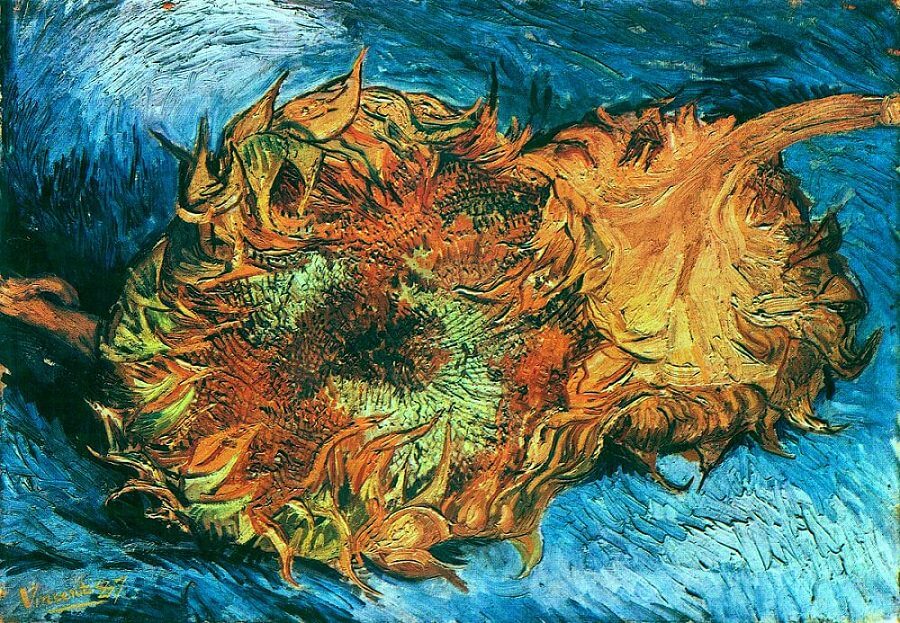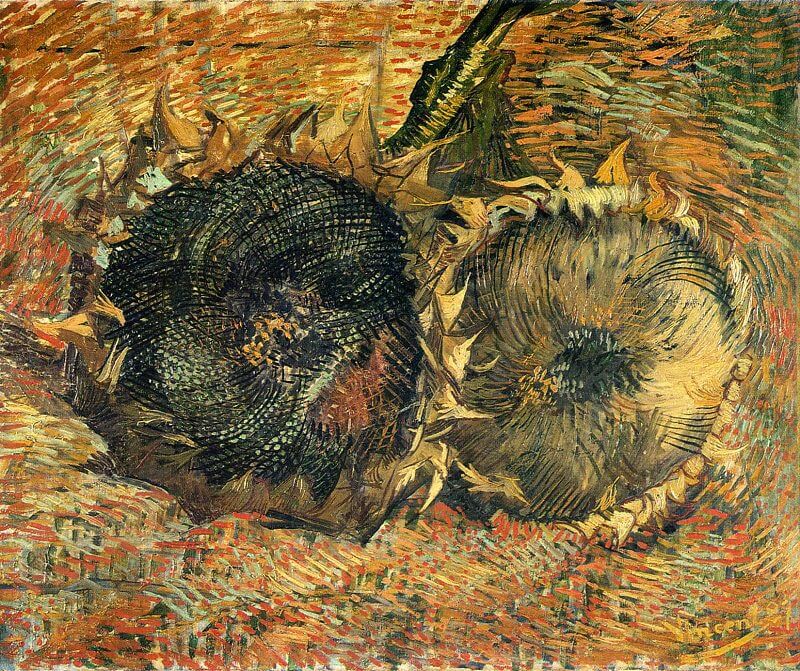Still Life with Two Sunflowers, 1887 by Vincent van Gogh

In the late summer of 1887, Van Gogh painted four still-lifes with cut, dried sunflowers. A small canvas in Amsterdam is no more than a rapid sketch from nature. The larger studies from Bern and New York were probably made after this first exercise. Both depict two sunflowers and are signed and dated in the same way. Its size and the richness of the painting technique make it the most important canvas by far.
Van Gogh exhibited the two signed studies in the Parisian restaurant Du Tambourin on the Boulevard de Clichy. They later came into Gauguin's possession. The art dealer Ambroise Vollard relates in his Souvenirs d'un marchand de tableaux that they hung above Gauguin's bed in his Paris studio. It has always been assumed that the painter acquired these still-lifes in an exchange with Vincent.
The motif certainly appealed to Gauguin, because in Arles he suggested exchanging several studies for one of Van Gogh's sunflowers. Considering the exchange of an unequal one, Van Gogh did not agree to it, referring grumpily to the Paris sunflowers already in Gauguin's possession.

In his Paris still-lifes Van Gogh was primarily interested in capturing the hearts of the sunflowers as convincingly as possible. That approach produced original paintings with attractive facture, as can best be seen in the canvas from Museum of Fine Arts Bern. In this painting, the hearts of both flowers are turned towards us, while the background has a fairly neutral character. The MOMA canvas, which elaborates on the Amsterdam sketch, is more varied in composition and technique than the work from Bern. One sunflower is seen from the back, and there are greater variations in light and dark in the blue background. For the large landscape format canvas in which Van Gogh finally mastered the motif, the painter could not be content with such a simple composition and colouring. The blue background is complemented by orange, and Van Gogh contrived to suggest greater depth by means of the stalks which project forwards and the shadows in the background.
These still-lifes with sunflowers produce a remarkably decorative effect. The sunflower motif was a popular one in the decorative arts at the time precisely for this reason, and that may have given Van Gogh the idea for these paintings.




















